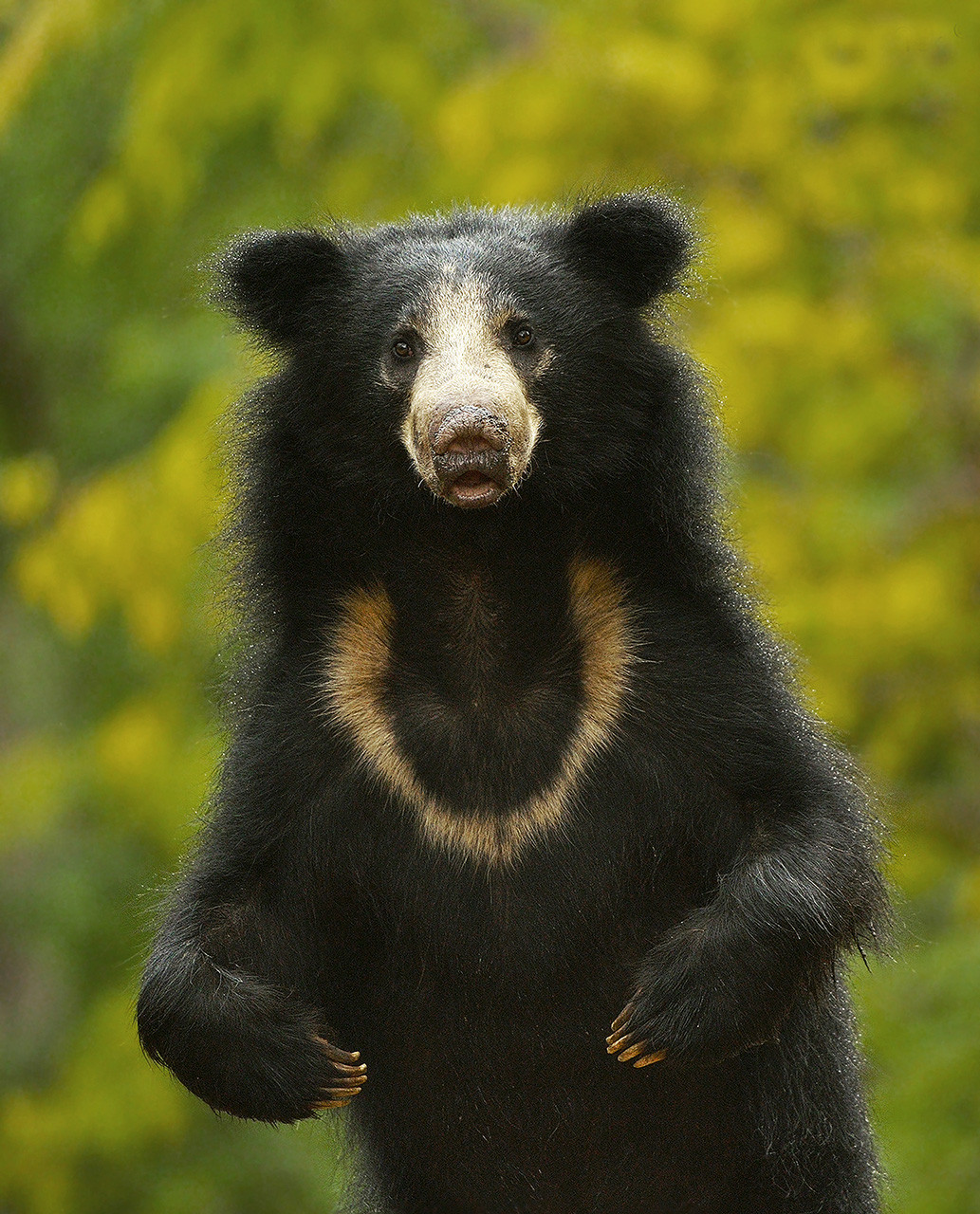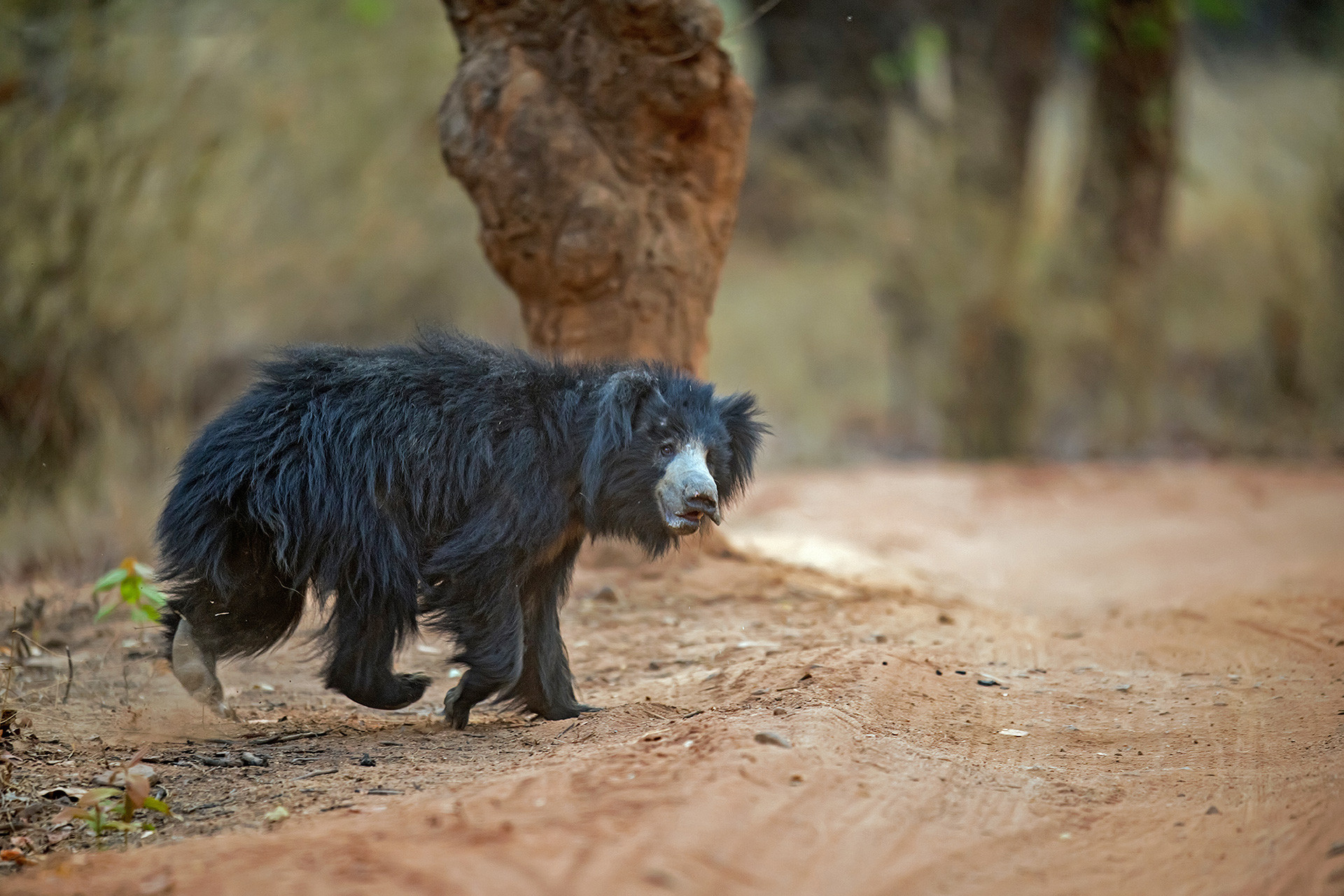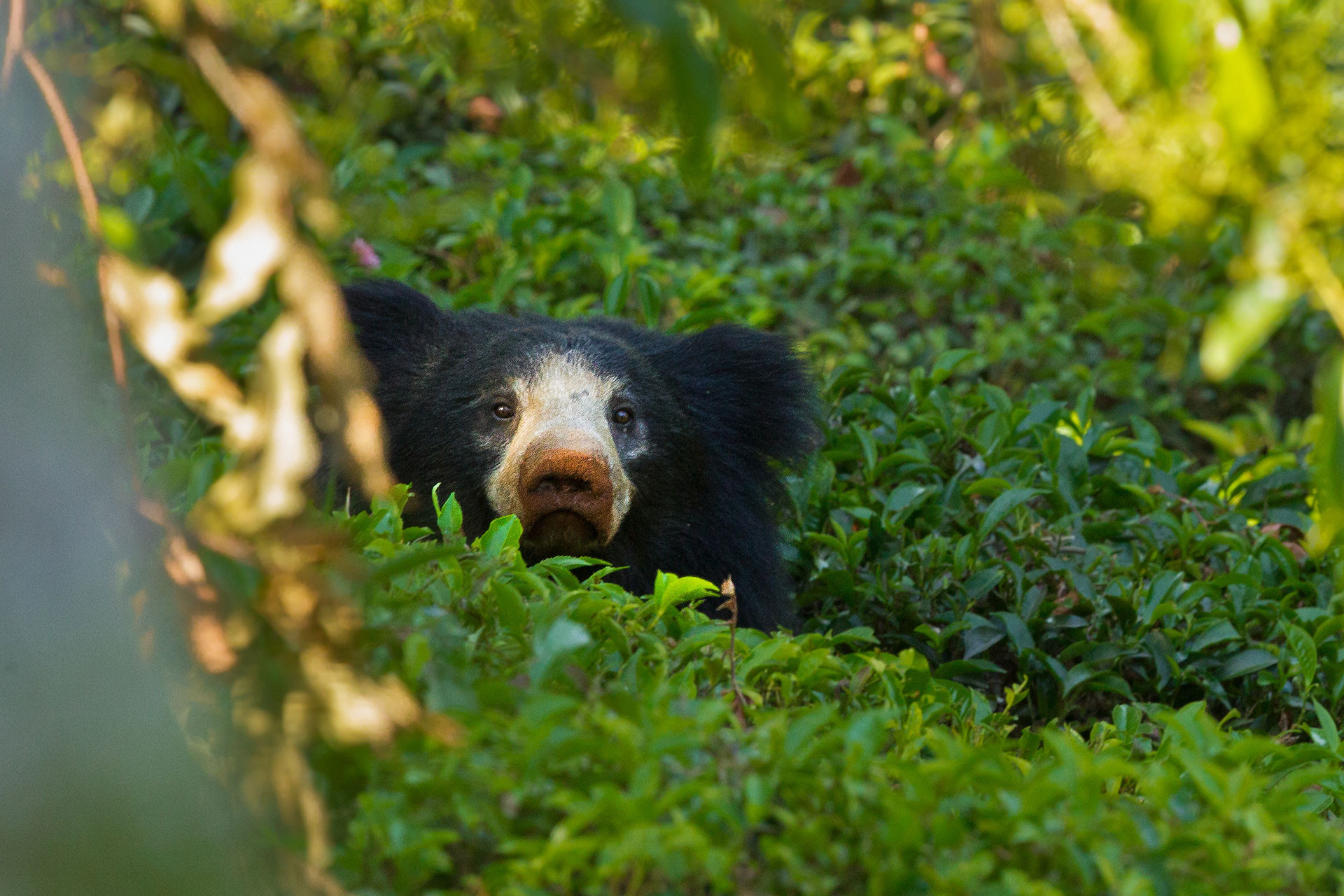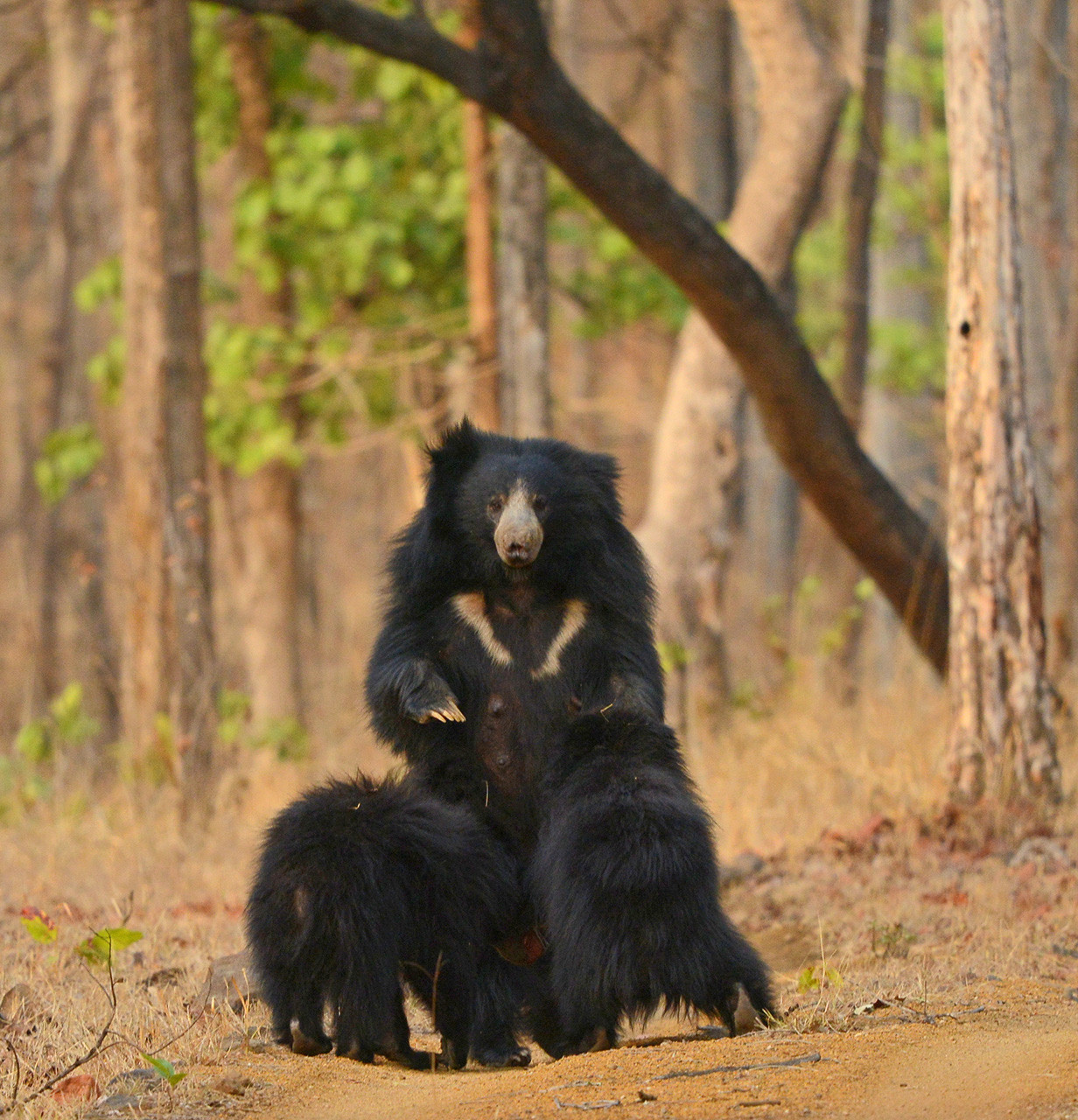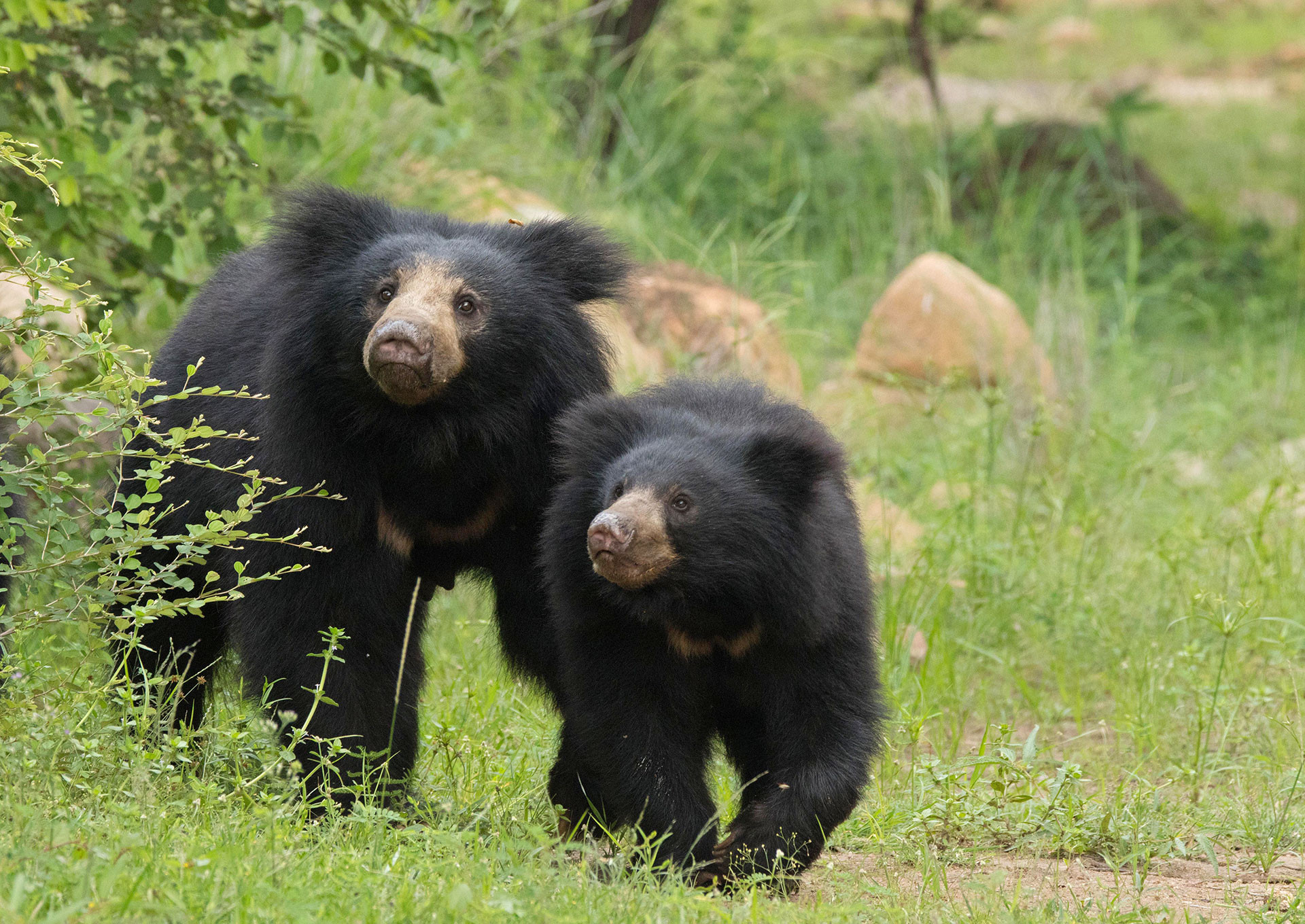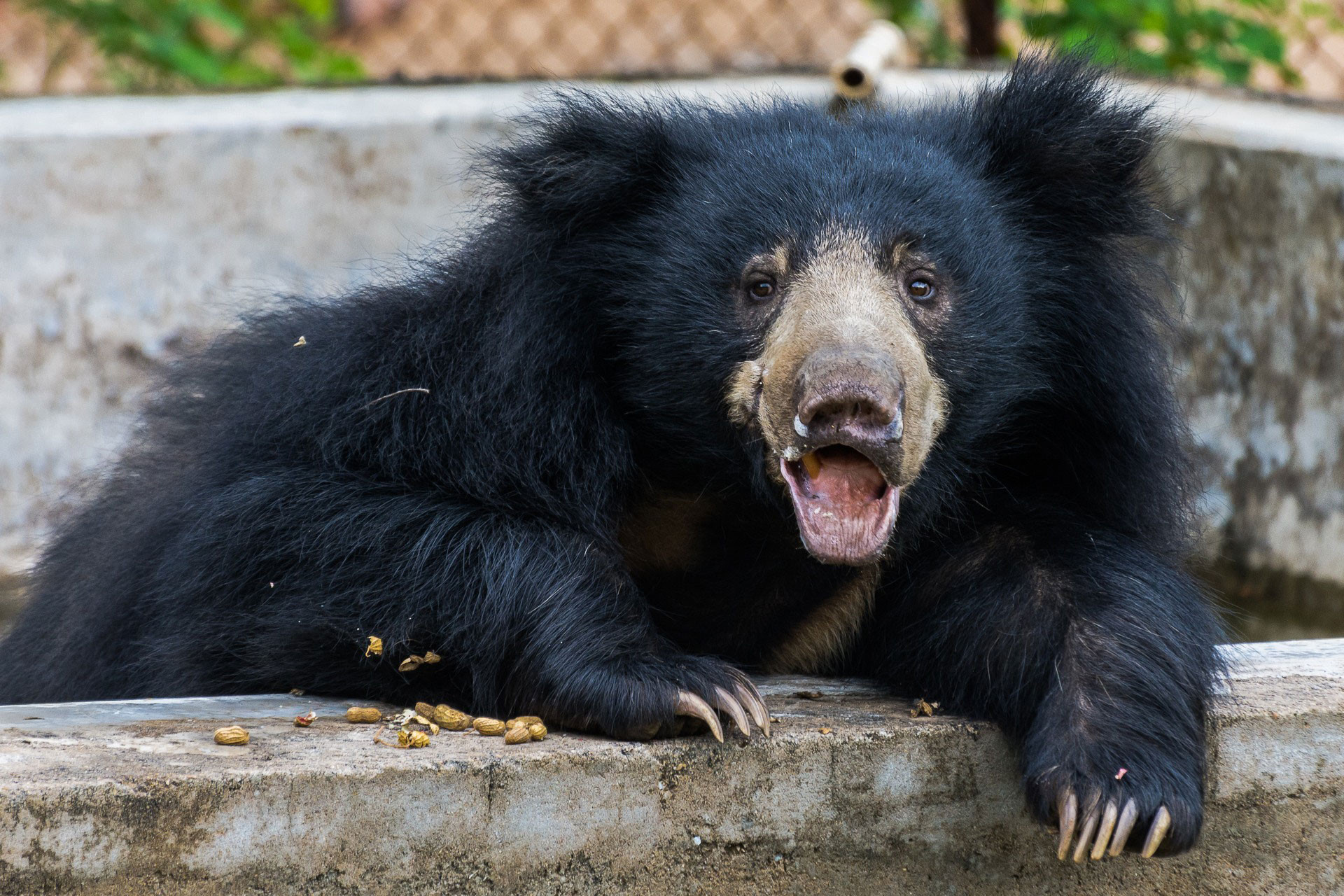In August 2021, the Tamil Nadu Forest Department received a strange call from a private tea estate in Valparai—there was a Sloth Bear stuck on top of a 20-foot-tall Silver Oak tree. The left forelimb of the bear was stuck in between two branches of the Silver Oak. The two-and-a-half-year-old male bear was rescued and released back into the forest after it had responded well to the treatment of his injured appendage.
Quite the cute little tale to recount, right? But this is often not the case. A week before the incident, a plantation worker had almost been mauled to death by two Sloth Bears in the same region. In central India's Kanha–Pench wildlife corridor, for example, human deaths due to human-animal conflict are more in the case of Sloth Bears than "man-eating" tigers. The 16,000sq.km. corridor, which is also home to 442 villages, recorded 255 bear attacks between 2004 and 2016.
Sloth Bears frequently venture into human-dominated spaces and are known to occasionally enter agricultural fields in search of food. Maybe they are rightly feared for their aggression and unpredictability (which is their primary response to threats), but much of this is our undoing. Habitat loss and forest degradation are the two main threats to the species. With almost all bear habitats outside Protected Areas cleared for agriculture, mining etc., it is difficult for bears to migrate which forces them to spill even more into human-dominated spaces.
Much like with other wildlife, we are at a juncture where successful human-bear conflict mitigation is an absolute necessity for the survival of the species and to reduce human fatality. Before we discuss the conservation measures in play and look at the way forward, let us start by learning more about this unique mammal—the only bear in the world built to vacuum up ants and termites.
1—Bear Necessities
Sloth Bear (Melursus ursinus) is a bear species native to the Indian subcontinent. Divided into two subspecies, Melursus ursinus ursinus and Melursus ursinus inornatus, the range of the Sloth Bear extends across India, Nepal, Bhutan and Sri Lanka. They are locally extinct in Bangladesh. The M.u inornatus is found only in Sri Lanka, where it occupies the northern and eastern parts of the island. Sloth Bears are mainly lowland species and inhabit a range of habitats such as grasslands, scrublands, and dry and moist tropical forests.
2—Large Paws, Blunt Claws
Covered in a thick, shaggy black coat, Sloth Bears weigh anywhere between 60 and 140kg depending on gender. Male bears are heavier than females but otherwise similar in appearance. Sloth Bears are also characterised by long snouts like those of anteaters. They have a distinct Y, V or U-shaped marking on their chests, which can appear in colours that range from white, yellow to brown. This marking is absent in the Sri Lankan subspecies. Did you know that among all the species in the bear family, Sloth Bears have the longest tails? They are also known for their large paws with sickle-shaped blunt claws.
3—The Ant Hoover
Sloth Bears are myrmecophagous, which means that they eat ants and termites. They also feed on fruits and consume honey from honeycombs. Sloth Bears have unique adaptations that aid them in consuming insects. They lack upper incisors, which along with their long tongues help them in “vacuuming up” insects. Their lower incisors aid them in scraping tree barks to find food. Their curved claws come to their aid when they want to break termite mounds or dig up the earth. They are able to close their nostrils while foraging, which prevents insects and soil from entering.
4—Starting a Family
The breeding period for Sloth Bears depends on their geographical location and in India they typically breed between late spring and early summer. The gestation period for Sloth Bears is about 210 days or seven months. Female bears prepare caves or dig dens before giving birth. They also defend their birthing site and spend a lot of their time sleeping in the area. Sows give birth to one or two cubs at the end of the gestation period.
5—Piggybacking On Mama
Sloth Bear cubs are born blind and open their eyes only after a month. They continue to live in the den for about two to three months, and then follow their mother around until they are two years of age. Among all bear species, Sloth Bears are the only ones that carry their young ones on their back. The long hairs on the adults aid the cubs in holding on to them.
You may also like to read
6—Land Of Karadi
The Daroji Sloth Bear Sanctuary is Asia’s first dedicated sanctuary for Sloth Bears. Established in 1994, the sanctuary is located close to the historic city of Hampi in Karnataka. Daroji extends over about 8,200 hectares and its rocky terrain is ideally suited for the bears. It is estimated that there are about 120 Sloth Bears in the region, and they are often sighted in the evenings when they come out of their caves looking for food. Daroji is also home to other species like leopards, mongoose, peafowl, spurfowl, etc. The sanctuary houses about 150-200 bird species and a diverse array of plants.
Learn more about the Hampi–Daroji region and how you can experience the 14th-century splendour and a one-of-a-kind sanctuary for the bears at the same time.
7—Threats & Counts
The Sloth Bear is designated as a Vulnerable species on the IUCN Red List. It is believed that its range was once spread over 200,000 to 400,000sq.km. However, reliable population estimates are not available to know the number of extant individuals. According to a survey conducted in 2006, there are anywhere between 6,000 and 11,000 individuals in the country. More than half of this population lives outside protected areas. Habitat loss and fragmentation, hunting and human-bear conflicts are some of the biggest threats to the Sloth Bears of our country.
8—Living With Humans
With habitat fragmentation and conversion and exploitation of forest land for agriculture and to harvest forest products, Sloth Bears are increasingly being pushed close to human settlements. Although Sloth Bears mainly feed on insects, studies have shown that they also feed on cultivated crops which leads to conflict situations. Additionally, outside protected areas, pregnant bears build birthing dens or caves close to human-occupied spaces, roads or fields, placing them at risk.
Interestingly, there are also regions where people co-exist with the bears. For example, in the Gudekote Bear Sanctuary in Karnataka, there is a temple where Sloth Bears frequent at night looking for leftovers of food offerings left behind by devotees. Similarly, Sloth Bears are frequent visitors of the Chandi Dongri temple in Chhattisgarh, where they feed on food offerings and other eatables given to them by the devotees. They also roam freely within the temple complex and are not disturbed by visitors.
9—Sloth Only By Name
Don’t be fooled by the Sloth Bear’s name or its appearance. When up against animals like tigers and leopards, they stand on their hind legs and use their teeth and claws to defend themselves. Behaving aggressively is their primary approach and female bears with cubs fiercely protect their little ones from predators. Photographer and naturalist Arpit Parekh photographed a bloody battle between a tiger and a Sloth Bear in the Tadoba-Andhari Tiger Reserve as the bear fought the felid to save her cub. Wildlife photographer Aditya Singh also captured the action between a pair of tigers and a Sloth Bear mother trying to protect her cubs. Despite being outnumbered, the ferocious mother was no match for the tiger couple. Sloth Bears are also capable of climbing trees to protect themselves.
10—Conserving The Sloth
For several rural communities, sharing space with Sloth Bears is now a regular part of their lives. Yet, lack of education and sensitisation places these animals in a precarious position. Living With Sloth Bears—a film by Wildlife SOS—reveals that basic knowledge of the bear's behaviour can go a long way in preventing conflicts. Simple measures like making noise, and carrying a bell while walking in forest areas can prevent bears from being surprised, and attacking humans in retaliation. It is also important to protect their habitats and create secure spaces for them. Sloth Bears are also captured for the ‘dancing’ bear trade by various nomadic tribes. Organisations like Wildlife SOS and Wildlife Trust of India (WTI) have been working to rehabilitate dancing bears and create alternate livelihoods and eradicate this practice among these communities. The Integrated Sloth Bear Conservation and Welfare Project (ISBCWP) by WTI has worked with more than 200 people across various states. Education and awareness are vital to ensure that the Sloth Bears of our country continue to thrive.

